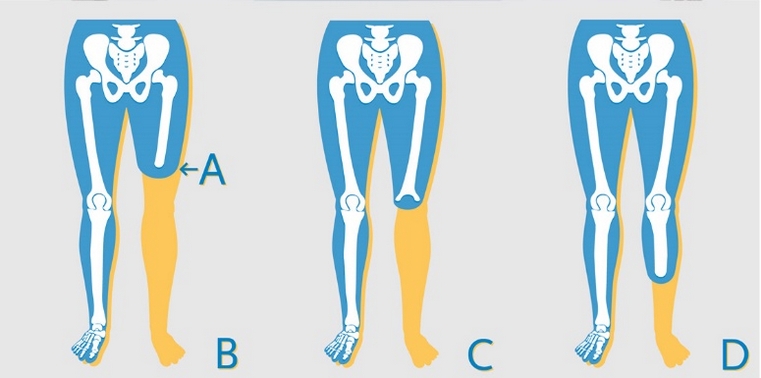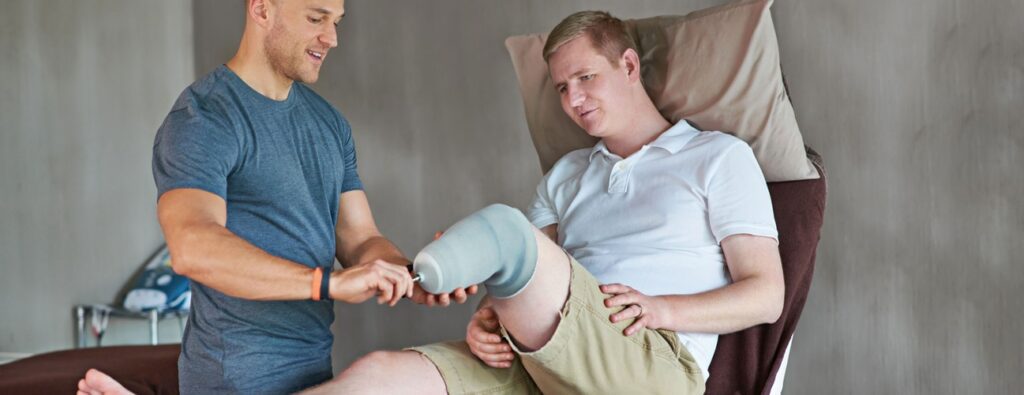Orthopedic Care for Amputees: Prosthetics and Rehabilitation
Losing a limb is a life-altering experience that requires comprehensive orthopedic care to ensure individuals can regain functionality and adapt to their new circumstances. Orthopedic care for amputees involves various aspects, including rehabilitation and the use of prosthetics. This article explores the rehabilitation care for amputees, the role of rehabilitation in the prosthetic and orthotic field, the types of prosthetics available, and the overall rehabilitation journey after limb loss.

Rehabilitation Care for Amputees: A Holistic Approach
Rehabilitation is a crucial component of orthopedic care for amputees. It encompasses a holistic approach to help individuals adapt physically and emotionally to limb loss. The primary goals of rehabilitation care include enhancing mobility, improving strength and coordination, and fostering psychological well-being.
Rehabilitation programs for amputees are personalized to meet individual needs. They often involve a combination of physical therapy, occupational therapy, and emotional support. Physical therapy focuses on improving strength, flexibility, and balance, while occupational therapy aims to enhance daily living skills and independence.
The Role of Rehabilitation in Prosthetic and Orthotic Care
Rehabilitation plays a pivotal role in the integration of prosthetics and orthotics into the lives of amputees. Prosthetics are artificial limbs designed to replace lost limbs, while orthotics involve the use of devices to support or correct musculoskeletal disorders. A comprehensive rehabilitation plan ensures a seamless transition to the use of these devices.
Amputees work closely with rehabilitation specialists who guide them through the process of learning to use prosthetics or orthotics effectively. This includes practicing mobility with the devices, adapting to different terrains, and mastering activities of daily living. The goal is to maximize functional independence and improve the overall quality of life for amputees.

Prosthetics have evolved significantly, offering various options to suit different levels of amputation and lifestyle preferences. The four main types of prosthetics are:
Exploring Types of Prosthetics
- Below-the-Knee (Transtibial) Prosthetics: These are designed for individuals who have undergone amputation below the knee. They include a socket, a shank, and a foot, providing support for walking and other activities.
- Above-the-Knee (Transfemoral) Prosthetics: For amputations above the knee, these prosthetics include a socket, knee joint, shank, and foot. They enable a more natural walking pattern and better stability.
- Below-the-Elbow (Transradial) Prosthetics: Designed for individuals with forearm amputations, these prosthetics include a socket, elbow joint, forearm, and hand, allowing for improved functionality.
- Above-the-Elbow (Transhumeral) Prosthetics: Suitable for those with upper arm amputations, these prosthetics include a socket, elbow joint, upper arm, and hand, providing enhanced control and versatility.
The choice of prosthetic type depends on factors such as the level of amputation, the individual’s lifestyle, and their specific needs and goals.

The Rehabilitation Journey After Limb Loss
Rehabilitation after limb loss is an ongoing process that extends beyond the initial adaptation to prosthetics. It involves regular follow-up appointments with rehabilitation specialists, adjustments to prosthetics as needed, and continuous emotional support.
Emotional well-being is a crucial aspect of rehabilitation after limb loss. Support groups, counseling, and peer mentorship programs play a vital role in helping amputees cope with the emotional challenges associated with adjusting to life with prosthetics.
In conclusion, orthopedic care for amputees is a multifaceted approach that involves rehabilitation, the use of prosthetics, and ongoing support. A personalized rehabilitation plan, coupled with advancements in prosthetic technology, empowers individuals to regain independence and lead fulfilling lives after limb loss. By addressing the physical, emotional, and practical aspects of rehabilitation, orthopedic care strives to optimize the overall well-being of amputees.
Know More About Amputation and Prosthetics Rehabilitation Program
